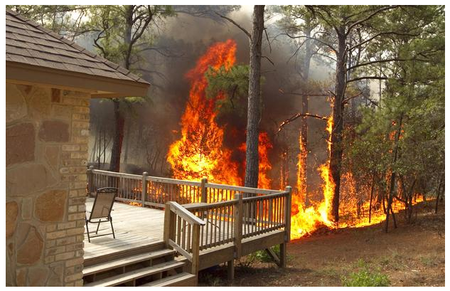Firewise Landscapes: Defense Against Wildfires
Wednesday, August 21st, 2013
This is Passport to Texas
Low hanging tree branches that hug the roof line of your home may provide shade, but they could put you and your property in danger during a wildfire.
11— The roof is the most vulnerable spot on your house; and plants that grow their branches down very close to or even touching the ground, and continue up to your roof, are really plants you want to avoid.
Mark Klym coordinates the Wildscapes program for Parks and Wildlife. He says homeowners living near wildlands are encouraged to use firewise landscaping techniques to reduce their home’s vulnerability to wildfires.
33— Firefighters prefer to see 30 feet of cleared ground around your home if possible; if you can’t give them 30 feet, give them as much as you can. That doesn’t mean no plants – it simply means being very selective with the plants that you have. Some of our wildflowers are very good at retaining their moisture; those are the plants that you want up close to your home. But anything that’s got an oily resin in it… anything that’s going to ignite very easily – dried grasses – you’ll want to avoid that. You also want to try and clean up the leaf litter around your home if you can. Because that will carry the fire to your door.
Find Mark Klym’s article on firewise landscaping in the October issue of Texas Parks and Wildlife magazine.
Support provided by Ram Trucks. Doing what’s right and good regardless of the degree of difficulty — takes guts. Those are the people who build Ram trucks. RAM.
For Texas Parks and Wildlife…I’m Cecilia Nasti.


 Passport to Texas is a
Passport to Texas is a  Passport to Texas is made available by:
Passport to Texas is made available by: